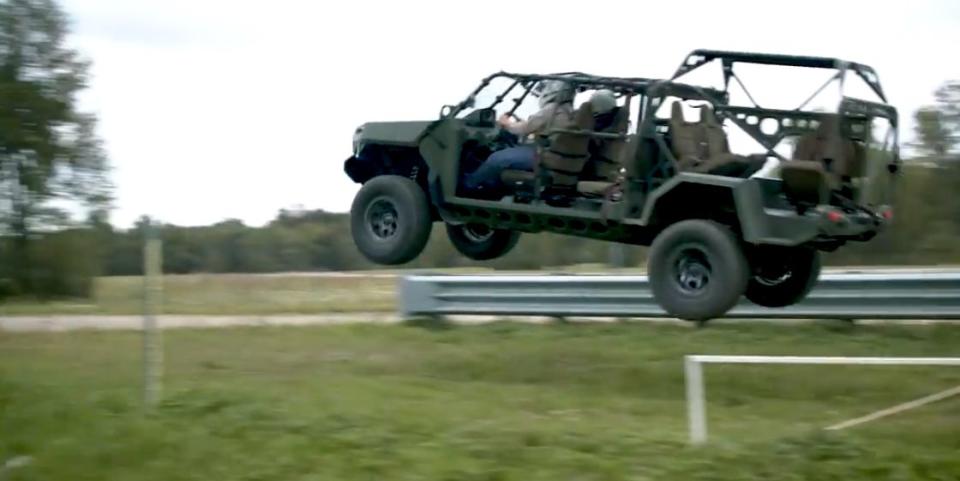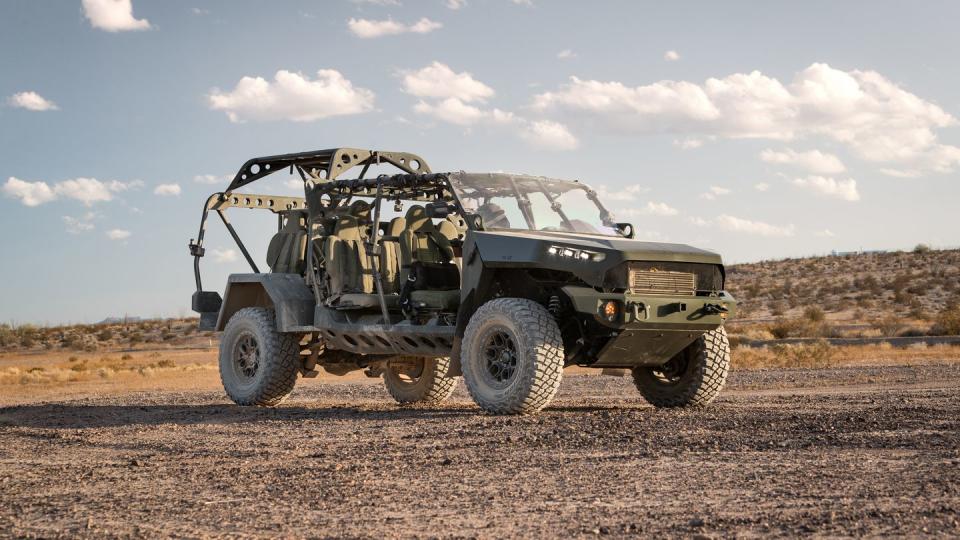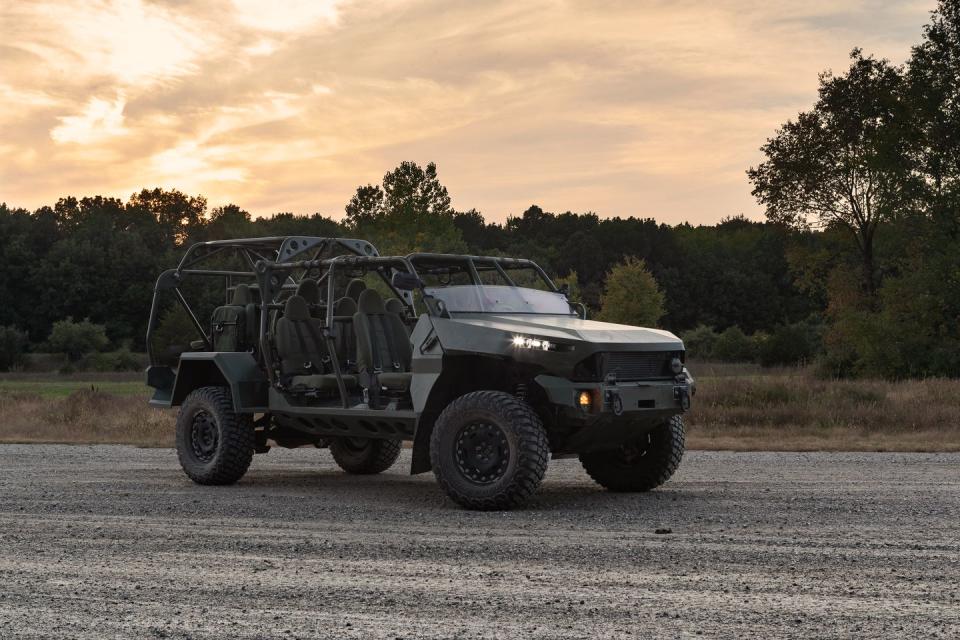GM's Building an Open-Air 4x4 Based on the Colorado, But You Can't Buy It

GM Defense will build lightweight infantry vehicles for the U.S. Army that are based on the Chevrolet Colorado pickup.
The $214 million contract will cover at least 649 and eventually more than 2700 of the nine-passenger vehicles.
The vehicles will be based on the ZR2 and use 90 percent off-the-shelf components, and they'll weigh a mere 5000 pounds.

In June, GM Defense signed a deal to build 649 Infantry Squad Vehicles for the U.S. Army. The contract was the culmination of a three-way competition in which GM Defense, Oshkosh Defense/Flyer, and SAIC/Polaris were each budgeted $1 million to develop a lightweight nine-passenger off-road troop carrier. The contract, which totals $214,297,869, means that each of these sweet Colorados will cost $330,197. They might build as many as 2065 more over the next eight years, should they get the go-ahead. The 82nd Airborne Division at Fort Bragg, North Carolina, will be the first recipient of the Battle Bison, as we're calling it.
GM started building trucks for the military in 1914, sending 90 percent of its trucks to the front in World War I. More recently, in the the 1980s, they built more than 70,000 lightly militarized Blazers and Silverados: the Commercial Utility Cargo Vehicle (CUCV). Plenty of those are now in private hands, their naturally aspirated 6.2-liter diesels still grumbling away. So the ISV continues a long tradition of modifying GM trucks for military duty.
Based on the ZR2 and using 90 percent off-the-shelf components, the nine-passenger ISV weighs only 5000 pounds, which means that a UH-60 Black Hawk helicopter can carry it on a sling. It'll also fit in the cargo hold of a CH-47 Chinook. The last diesel ZR2 we tested weighed 4975 pounds, and you can see how they kept the weight in check while adding four seats and a steel roll cage—they Mad Maxed it and ditched most of the body.

GM Defense brags that it only took 120 days to go from contract to delivery, but in this case "delivery" means that eight initial vehicles have been sent to the army's test center in Aberdeen, Maryland, where they'll undergo further validation—you know, get tossed out of planes and whatnot. That's actually one of the requirements: "low-velocity air drop by fixed-wing C-130 or C-17 transport aircraft." Those Multimatic spool dampers are about to get a workout. If all goes according to plan, the 82nd Airborne will start taking deliveries in four months.
Specs
Specs are thin—classified intel, need to know, you know—but the ISV design challenge specified a payload of 3200 pounds, plenty to accommodate nine passengers plus gear. All the ISVs will use the Colorado's 2.8-liter diesel four-cylinder paired with a six-speed automatic and front and rear locking differentials. The factory power rating is 186 horsepower and 369 lb-ft of torque, but we'd suspect this little Duramax is cranking out somewhat higher numbers than that. In one GM video, we see the ISV sliding into a corner while belching a cloud of back smoke from its exhaust, and stock ZR2s don't roll coal. That suggests more fuel being burned and a distinct lack of emissions equipment, which would make sense for a weight-constrained military off-road vehicle.

Adding some power would solve our biggest gripe with the Duramax Colorado, which is that it's slow. It makes sense that the ISV uses the 2.8 Duramax rather than the gas 3.6-liter V-6. The military likes diesels, since it simplifies logistics to have the big stuff—like MRAPs—using the same fuel as the smaller stuff. (The U.S. Army even has diesel Polaris RZRs and diesel Mercury outboards.)
Interestingly, GM Defense also collaborated with the army's Ground Vehicle Systems Center to build a concept Colorado, the ZH2, powered by a hydrogen fuel cell that can export up to 50 kW of power to run electrical equipment in remote locations. It also generates up to two gallons of water per hour—its only emission—which could be useful, too.
The initial numbers may be limited, but we're already looking forward to the day when these things follow the path of the CUCV and Humvee and start trickling into military surplus auctions. But for now, if you want to drive one, you might have to jump out of a plane first.
You Might Also Like

 Yahoo News
Yahoo News 